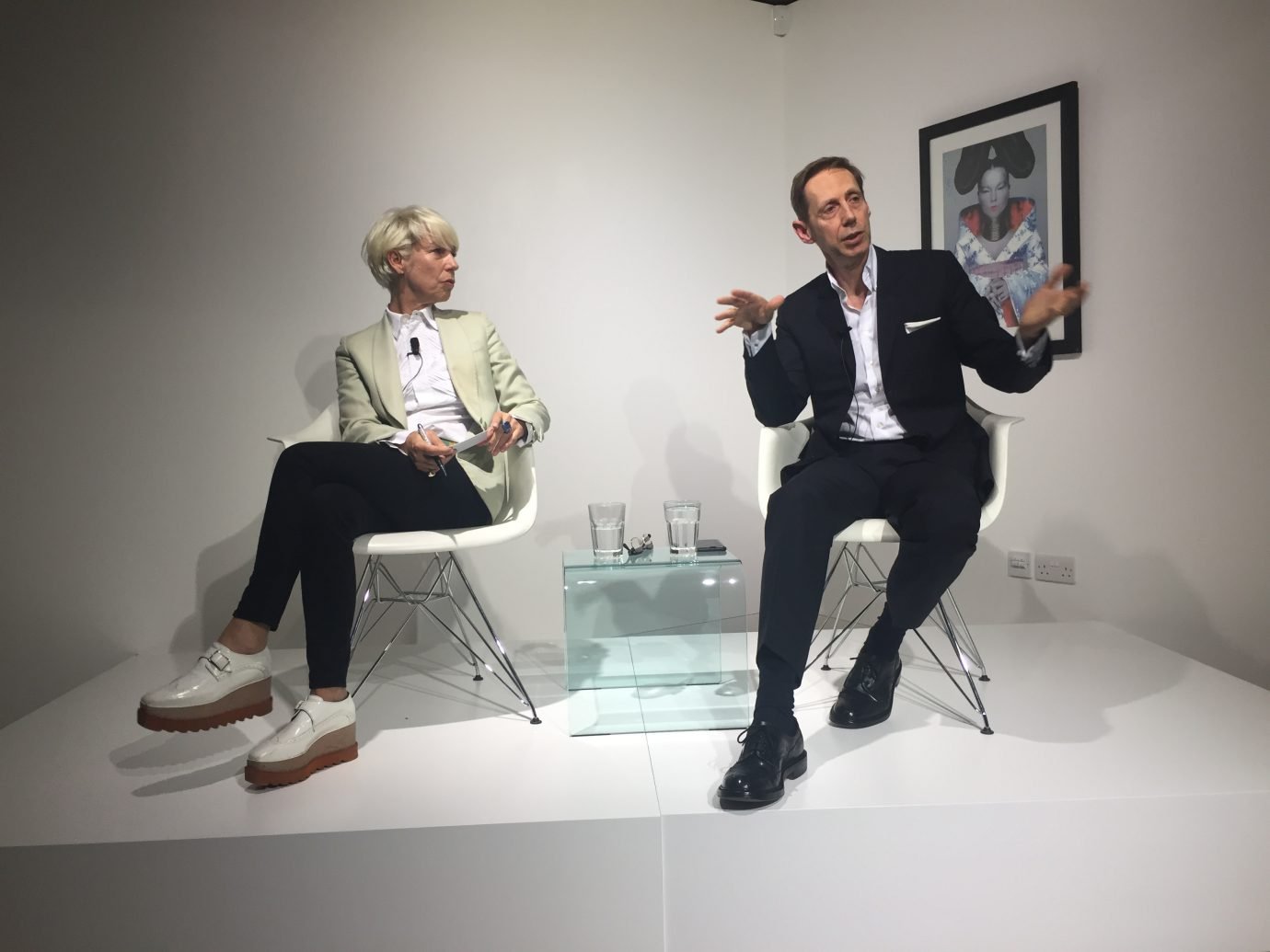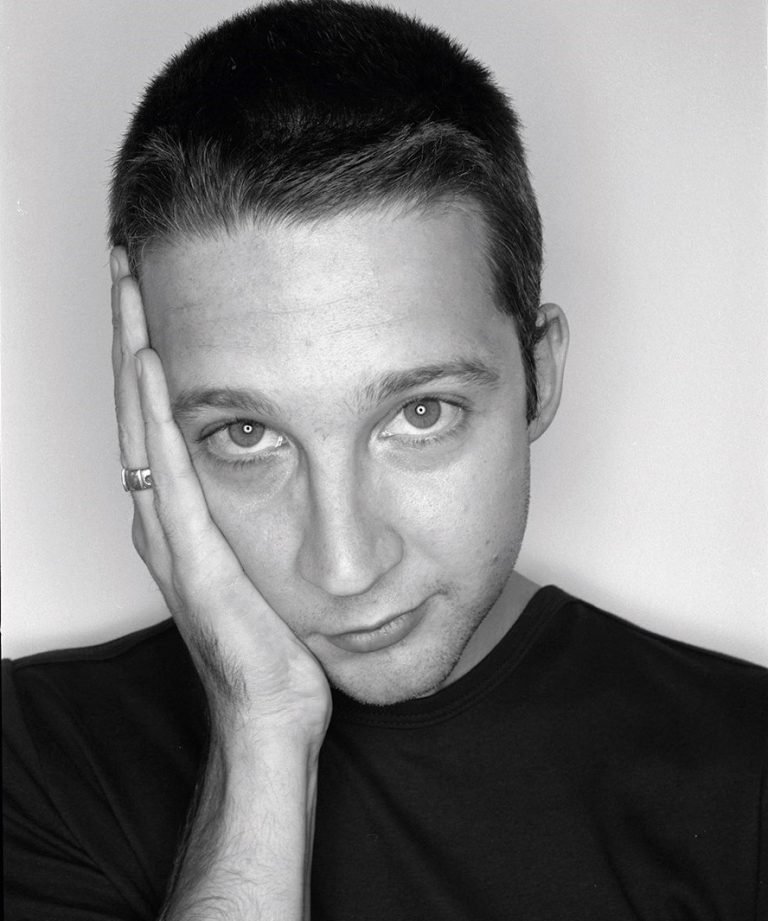This interview is part of DREAMERS, a collaborative project with MCQ that couples aspiring artists to their heroes for a one-on-one advice session. The conversations are recorded, redacted, and can be read in their entirety on my.mcq.com
Monday 31 May 2021, 11am Paris time
Nelly Carle: Can you tell me about how you started your career? Did you assist someone or not?
Katie Burnett: I started off in London where I was studying fashion at Instituto Marangoni, and I got really into photography. There was a photographer whose work I really loved, Ellen Rogers. I talked with her and asked about assisting or working with her, and she said: “Well, why don’t you start styling? You can make stuff.” So I started working with her, doing custom pieces, and essentially just having a play. One of the first projects we did was a film for Dazed for the BFI Film Festival and then things just kind of went from there. It really felt like my perfect fit. I think the foundation of me starting to style was just literally having no idea what I was doing, and playing around with stuff, making a mess and essentially making a bunch of stuff out of random things. It was just really experimental. It was starting off without boundaries, and for me that was really crucial. If I would have assisted in the original way, I feel like I would have seen so much ‘structure’ in terms of a way to work. That’s still how I work, I love to kind of flip things on their head and try to see them in my own way. For me, it’s a bit boring as a stylist that when you’re making a picture, you can see that it’s Look #42 from the lookbook. Without a personal creative input, you haven’t really done your job as a stylist.
Nelly: Where do you mostly find your inspiration?
Katie: Definitely pictures, probably more like vintage photographs, things from the 40s to the 60s. That’s the era of photography that I definitely always go back to time and time again. Whenever I’m researching, I go into quite a rabbit hole. I think I’ve always loved the kind of nostalgic aspect of a black and white photograph or something where you just can’t really pinpoint the time or feels a bit suspended in time. I could just look at pictures forever. I’m just so drawn to how it can bring you into another place.
“Sometimes with the very best pictures, you don’t even notice the clothes. I think the most iconic pictures are always like that. ” – Katie Burnett
Nelly: And when you’re looking at a picture, you’re looking at the mood, the outfit, and then it’s like creating a scene in your head?
Katie: Yes. That can come from the styling aspect in the pictures. Sometimes you have an idea and you really want to build something where the styling dominates the picture and it’s all about the fashion. I definitely love photography, but then there are moments where I just love when the styling takes over everything. I love a big styling moment, that’s for sure! But, you know, I think that there needs to be a balance. Sometimes with the very best pictures, you don’t even notice the clothes. I think the most iconic pictures are always like that.
“As a creative with a platform, you always have a responsibility to make sure everything you’re putting out is giving the message that also aligns with what your beliefs are. ” – Katie Burnett
Nelly: I wanted to also touch on the idea of responsibility in fashion. We’re creating images that inspire and influence people, and so sometimes we need to be careful about the message we share. Does that influence your work at all?
Katie: As a creative with a platform, you always have a responsibility to make sure everything you’re putting out is giving the message that also aligns with what your beliefs are.
Nelly: When I’m shooting small projects and doing casting, if there’s a girl who’s too skinny, that might not be the message that I want to share, but she’s also super cool… Those are the kind of questions that I always have in my mind.
Katie: It’s a question about whether it’s somebody that’s really authentic and right for the project versus someone that’s ticking a box. Sometimes you get pushed into a job or a casting where it’s like: “Okay, we need to check, tick tick,” and you wonder: is the casting really authentic to what the project is? I have always been open to people from different backgrounds, shapes and sizes. I think now it is really nice to see from brands a larger interest in representation of real people, more like 90s street casting, and it’s really nice to be seeing that more regularly in fashion advertising and editorials. It’s a more consistent reflection of what reality is like. As much as I love supermodels and having that type of unearthly woman in the picture, it’s really nice now that we’re able to see so many different worlds and so many different points of view.
Nelly: As a stylist, how much do you collaborate with the photographer?
Katie: I love being as close as possible to the process because for me, especially with the styling, it’s not only about honing in and focusing on what looks we’re going to be pulling for the shoot, it is also about the casting and the photography. I don’t anymore, but I definitely used to always want to jump in and do casting myself. It’s also nice to work with great casting directors, but I definitely love it all. I work really closely with the photographer to build on the mood boards, but it depends, sometimes the photographer has a very specific idea, so you work less. I think for me now, especially with editorials, it’s imperative for me to be a part of the beginning process, and even editing the pictures together at the end. It is still about respecting the photographer and not overstepping, but I think it’s so important to have that collaboration where you’re both open to bounce back and forth.
“I’ve never seen stress as being a productive thing, especially in a fashion environment, because at the end of the day we’re making a fashion picture. ” – Katie Burnett
Nelly: This job can be super stressful, and I believe most of the people working in fashion can often put pressure on themselves like it’s life or death. What is your point of view and how do you manage that?
Katie: I don’t get stressed very easily, and I’ve never seen stress as being a productive thing, especially in a fashion environment, because at the end of the day we’re making a fashion picture. When I started styling I definitely used to stress more or feel a lot more pressure like, “Oh, I need this specific look to make the story. If I don’t have this look, it’s not going to work!” I think that as I went along and developed my aesthetic, I literally just felt like, “Well, if I don’t have any clothes, I could dump over a trash can and make a look out of it, I don’t really care.” I feel you can make something out of anything, so that’s the way that I always try to approach it. Even when I have an assistant who starts to stress on set, I’m like, “Guys, we need to just take a breath.” There’s always a way to figure it out. Sadly, I think my assistants stress more than I do. Whenever we’re prepping for a shoot, I’m always pretty chill, and they’re like, “You’re really relaxed!” I also think that this last year has really put a lot of things into perspective for me. I remember my first big story after the lockdown, when things were kind of opening up in London… I used to follow my assistant’s PDFs and be able to see what they’re confirming, I’d be on it nonstop. Now, I didn’t even look at it the night before the shoot, because the whole situation just felt tricky with COVID, the shipping was so all over the place, so you can’t really get attached to anything. What’s there on the day is going to be there and I don’t want to be stressed about what I don’t have. Now the approach to editorial definitely feels a lot easier, but I also have such a great team of assistants. When you do have a great team behind you, it allows you so much more to relax, and I’m lucky to have such great people to help me out and support me on the shoot.
Nelly: Good to know! When you look back at the beginning of your career, what advice do you wish someone had given you?
Katie: I used to always think that I wish I had assisted. I always felt like I missed out in the beginning, because my friends had been assisting big people, but now I’m happy I didn’t assist because then you kind of do your own thing. Also, make up your own mind of what you like. The idea that, “If I like something, I don’t really care if anyone else likes it”, and to be really content with that. When you’re trying to look at other things and be someone else or adopt another style, that doesn’t work. Just be content with your own aesthetic and really hone in on what you love. In the beginning you’re kind of trying to feel out what you’re into and you’re trying a lot of stuff. At some point you know what works and just go with your gut.
Nelly: Why did you choose to do this job and not something else? What makes you feel happy about it and keeps you going as a stylist?
Katie: It’s just something that happened, and I don’t know what else I would be. It’s one of those jobs where you love it and you’d think: “Okay, I would do this for free.” I feel it fits so many of my strong qualities – I love making things, I love drawing, I love painting, I love movement. It just ticks the boxes for so many creative outlets for me. It’s a job that is so fulfilling in the sense of the images you’re making and the clients you’re working with, and it allows you to meet so many amazing people. I can’t really imagine anything else.
Interested in learning more? You can find all the interviews from the DREAMER series here.









